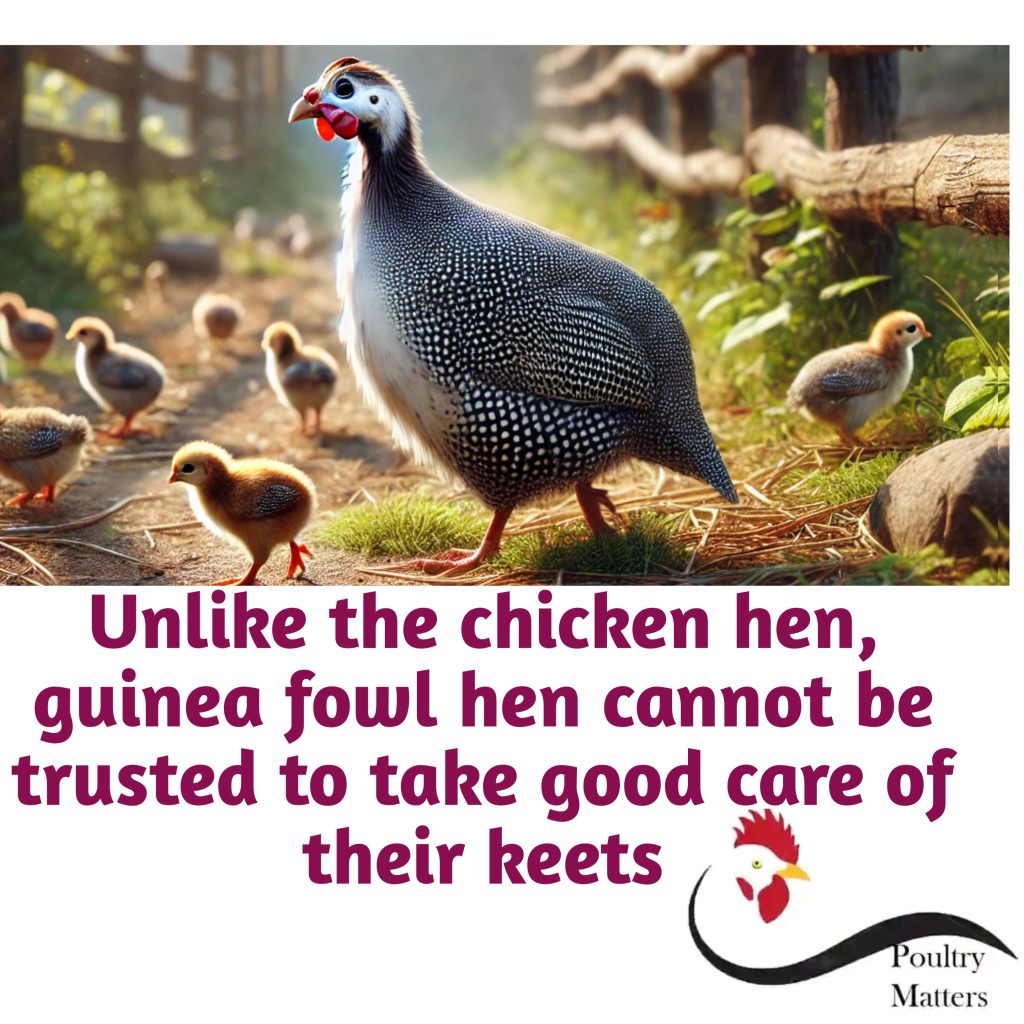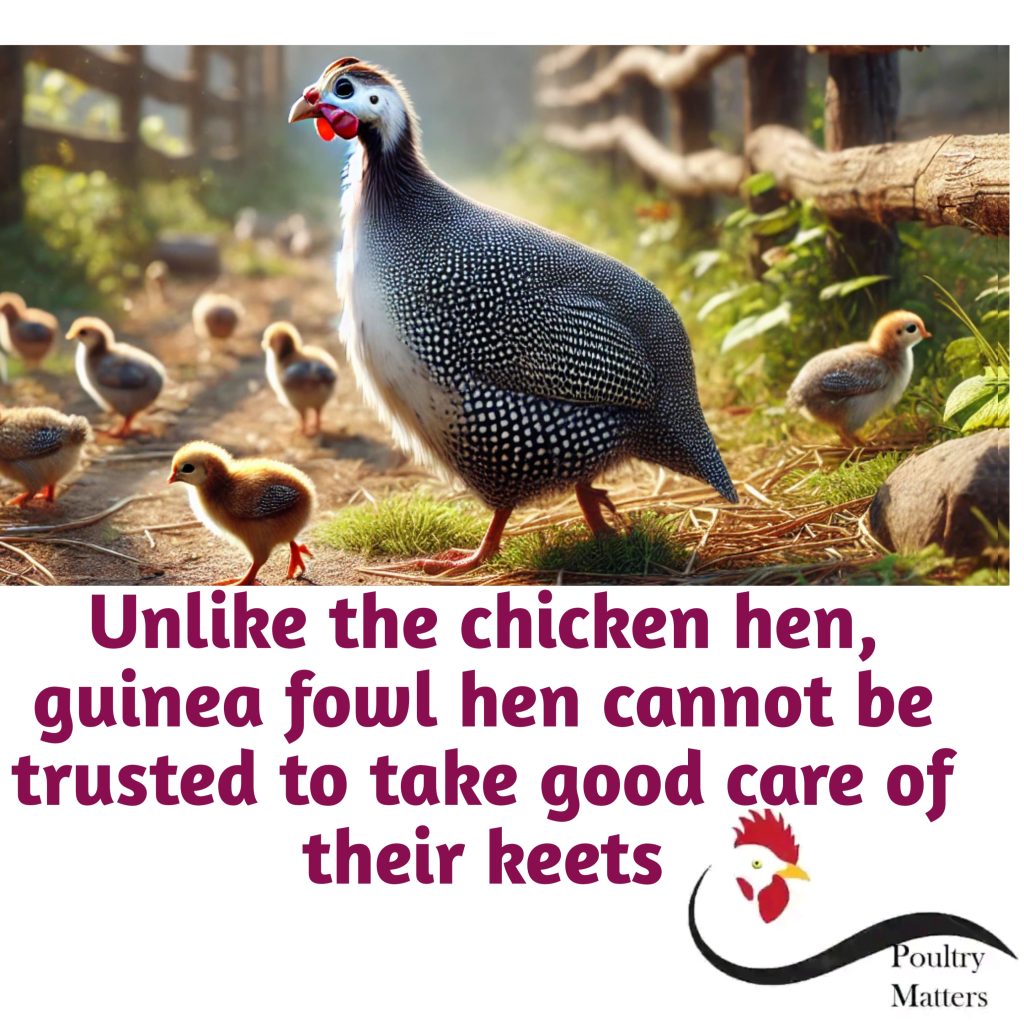Guinea fowl farming gradually is becoming more popular in poultry farming due to the high resistance of the bird to diseases and ability to thrive in any environment. However, raising the birds comes with some unique challenges to the farmer. In this discussion, we will review the challenges of guinea fowl farming and guidelines for creating effective solutions.
Challenges in guinea fowl farming
Certain peculiar features of the bird – guinea fowl, result to some challenges for the guinea fowl farmer. These challenges often impact on the success and profitability of the guinea fowl farm
Flighty and wild nature –
Unlike the common chicken, guinea fowl do not adapt well to confinement. They are aggressive and wild in nature with the tendency to fly away consequently leading to loss of stocks to the farmer ( when not properly managed.
Noisy behavior and disturbance –
Guinea fowl are known for their very loud continuous call which can be disturbing and unacceptable in some areas. This disturbing nature of the birds limits the ability of the farmer in choosing the best location for the farm (in some instances).
Initial high investment in infrastructure –
Unlike the common chicken, the wild nature of guinea fowl demands that their housing facility must provids some extra amenities leading to higher cost in investment for the farmer. For example – to avoid the birds flying away, it is necessary to provide high fence around the brooder.
Seasonal egg laying –
Guinea fowl mainly produce eggs during the warmer months in the year, thereby, limiting the possibility of all-year-round production on the farm.
Slow growth rate –
Compared to the common chicken broiler, guinea fowl take a longer time to reach the market weight. This increases the duration for a complete production cycle and reduces the number of time the farmer can harvest from the flock within a year.
Nesting and egg collection –
Guinea fowl love to lay their eggs in hidden places which makes it a challenge for the farmer to identify nest and gather the eggs for hatching or sales.
Low egg hatchability rate –
Unlike the common chicken hen, guinea hens have the tendency to abandon egg before they hatch, thereby, leading to a waste of the eggs and a loss to the farm.
High mortality rate in keets –
Keets are very susceptible to cold, poor nutrition and diseases in their very first few weeks leading to high mortality of the birds. Unlike the common chicken hens, guinea hens cannot be trusted to take good care of their keets.
Solutions to guinea fowl farming challenge
Keets welfare
One of the challenge adversely impacting on the profitability of guinea fowl farming is the high rate of keets mortality due to the carefree habit of the guinea hen. A realistic solution to this challenge is for the farmer to take charge of the care of the keet. To avoid the waste of the eggs or mortality of the keets, the farmer must take full responsibility for hatching the eggs and raising the young keets into healthy and productive guinea fowl
Training/taming of the birds
The wild nature of guinea fowl creates a form of challenge, as the birds tend to wander away from the farm. Therefore, the farmer must tame the wild nature of the birds by devising activities/ procedures to tame the birds and make them learn to return to their shelter at an appropriate timing. The feeding routine of the birds is one means that can be deployed for the training of the birds.
Artificial hatching
To avoid wasting the eggs due to abandonment by the guinea hen, the farmer must gather the eggs from their nest and hatch using artificial incubator. By using artificial incubator, more eggs are hatched to increase the number of birds in the flock. Increasing the flock size enhances the profitability of the fame’s operations.
Nest monitoring and egg collection
Guinea hen like to lay their eggs in hidden places, therefore, to avoid waste or loss of eggs, the farmer must monitor the guinea hen to identify where eggs are laid. This is to enable the farmer gather eggs for hatching process or sales to the market. The farmer can also create fake nest around the brooder to encourage the guinea hen lay eggs in places that would be obvious to the farmer.
Spacious brooder
Guinea fowl are aggressive in nature, therefore, to avoid territorial dispute among the flock, it is important that there is enough space for the birds to roam freely without any form of overcrowding.
Conclusion –
Despite the challenges, guinea fowl farming is a profitable venture. However, it demands the right strategies in brooding, secure housing, eggs management and controlled feeding. Getting these strategies right, significantly reduce the risk of loses associated with mortality, wandering, egg-laying, etc.
Are you facing any challenge in your guinea fowl farm? Let us know in the comment, send us a message – we are here to help you.
We are your colleague, partner and friend in all poultry matters,
Read more https://poultrygist.com.ng/2025/03/raising-strong-and-healthy-keet-flock/
https://poultrygist.com.ng/2025/03/guinea-fowl-breeding-habits/


